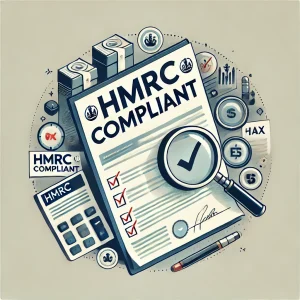
Many people assume that HMRC compliance is a simple process. However, reality often proves otherwise. The UK’s tax and regulatory framework is complex, and navigating it without expert knowledge can lead to unexpected issues. Whether you’re dealing with pensions, tax filings, or overseas transfers, ensuring compliance with HMRC regulations requires patience, attention to detail, and the right guidance.
Why is it so complicated?
At first glance, following Her Majesty’s Revenue and Customs (HMRC) rules might seem straightforward. After all, they provide clear guidelines on their website. But, in practice, things are rarely that simple. Many regulations contain technical language, hidden clauses, and unexpected requirements.
For example, transferring a pension fund overseas seems like a standard process. Yet, unless the scheme is HMRC-compliant, you could face heavy penalties. Even when selecting a scheme from the official HMRC QROPS list, compliance is not guaranteed. The burden of verification falls on individuals, making the process riskier than it appears.
Common pitfalls
Many people struggle with HMRC-approved processes due to minor errors. Even a small miscalculation in tax filings can result in fines. Similarly, if an overseas pension transfer does not meet HMRC’s regulatory standards, it could be classified as an unauthorised payment, leading to significant tax charges.
Here are some common mistakes that cause compliance issues:
- Misinterpreting HMRC tax rules, leading to underpayment or overpayment
- Choosing an overseas pension scheme that appears HMRC-approved but isn’t
- Failing to meet the required documentation standards for compliance checks
- Assuming that a financial advisor automatically ensures full HMRC adherence
Understanding these risks is crucial to avoiding costly errors.
Can you check HMRC compliance on your own
Technically, yes. The HMRC website provides access to guidelines and tax calculators. However, interpreting HMRC rules is where most people face challenges. The language used in compliance documents can be confusing, and updates to regulations make it even harder to stay informed.
Additionally, some procedures, like HMRC-approved QROPS transfers, require additional verification. Even if a pension scheme is listed on HMRC’s website, the responsibility of ensuring compliance remains on the individual. Unfortunately, many applicants only realize this after their transfer gets rejected.
How to ensure full HMRC compliance
Since UK tax regulations change frequently, staying compliant requires more than just checking a website. A better approach is to work with professionals who specialize in HMRC-compliant financial transactions. This helps prevent costly mistakes and ensures that all legal requirements are met.
Here’s what you can do to stay compliant:
- Consult with experts who have a deep understanding of HMRC’s regulatory framework
- Double-check that any overseas financial transactions meet HMRC pension transfer rules
- Keep up with policy changes, as regulations can shift without notice
- Ensure that all paperwork is completed correctly to avoid unnecessary delays
By taking these precautions, individuals and businesses can avoid compliance risks and unnecessary penalties.
The real cost of non-compliance
Many assume that failing to comply with HMRC guidelines results in minor penalties. However, the consequences can be far more severe. Depending on the issue, non-compliance may lead to:
- Hefty fines or additional tax charges
- Delays in pension fund access due to HMRC rejection
- Legal complications in cases of deliberate tax avoidance
- Increased scrutiny on future financial transactions
While some mistakes can be corrected, repeated violations could result in serious consequences. That’s why ensuring compliance with HMRC rules should always be a priority.
Final thoughts
At first, HMRC compliance might seem like a simple matter of following guidelines. But in reality, the process is filled with potential obstacles. From pension fund transfers to tax filings, every step must be carefully reviewed.
Rather than risking financial penalties or application rejections, it’s best to seek expert advice. Understanding HMRC’s regulatory structure takes time, but with the right approach, staying compliant becomes much easier.
